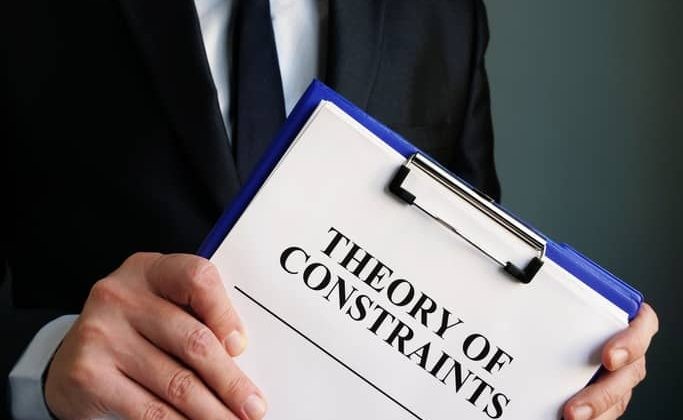The Theory of Constraints (TOC) is a powerful methodology for identifying and also managing the factors that limit an organization’s performance. Developed by Dr. Eliyahu M. Goldratt, this theory posits that every system has at least one constraint that prevents it from achieving its highest potential. By focusing on these constraints, businesses can implement strategic improvements that enhance efficiency and profitability. Understanding the Theory of Constraints is essential for managers as well as executives looking to drive continuous improvement in their operations.
Identifying the Constraint
Identifying the constraint is the first step in applying the Theory of Constraints. A constraint is any factor that limits the system’s output or performance. It could be a physical limitation, such as machinery capacity, or a policy constraint, such as inefficient procedures. Identifying the constraint requires a thorough analysis of the entire process to determine the weakest link.
Furthermore, engaging with team members and stakeholders during this analysis provides valuable insights. Often, those who work directly with the processes have a deeper understanding of the bottlenecks. By leveraging their expertise, businesses can more accurately identify the constraint. Recognizing the constraint is crucial as it sets the stage for targeted improvements.
Exploiting the Constraint
Exploiting the constraint involves making the most of the identified limiting factor without significant investments. This step focuses on maximizing the efficiency and effectiveness of the constraint. Simple adjustments, such as reallocating resources or optimizing workflows, can significantly impact performance. The goal is to ensure that the constraint is operating at its full capacity.
Moreover, continuous monitoring of the constraint’s performance is essential. Implementing real-time tracking and feedback mechanisms helps maintain optimal efficiency. By exploiting the constraint effectively, businesses can improve output and reduce waste. This step highlights the importance of strategic adjustments in achieving substantial gains.
Subordinating Other Processes
Subordinating other processes to the constraint means aligning all other aspects of the system to support the constraint. This step ensures that non-constraint processes do not hinder the performance of the constraint. By prioritizing tasks and resources around the constraint, businesses can maintain a smooth workflow and prevent bottlenecks.
Additionally, clear communication and coordination among team members are vital. Ensuring that everyone understands the importance of the constraint and their role in supporting it fosters a collaborative environment. By subordinating other processes, businesses can create a synchronized system that maximizes overall efficiency.
Elevating the Constraint
Elevating the constraint involves making significant changes or investments to increase its capacity. This step may include acquiring new equipment, hiring additional staff, or implementing new technologies. The objective is to expand the constraint’s capacity to improve the system’s overall performance.
However, it is crucial to conduct a cost-benefit analysis before making substantial investments. Understanding the potential return on investment helps ensure that the resources are used effectively. By elevating the constraint, businesses can achieve long-term improvements and sustain growth.
Repeating the Process
Repeating the process is a fundamental principle of the Theory of Constraints. Once a constraint is addressed, another will emerge. The cycle of identifying, exploiting, subordinating, and elevating constraints continues as part of a continuous improvement strategy. Regularly reviewing as well as analyzing the system ensures that new constraints are promptly identified and managed.
Furthermore, fostering a culture of continuous improvement encourages employees to seek out and address constraints proactively. By embracing this iterative process, businesses can drive ongoing enhancements and also maintain a competitive edge.
Benefits of the Theory of Constraints
The Theory of Constraints offers numerous benefits for businesses seeking to improve efficiency and profitability. One of the primary advantages is the focused approach to problem-solving. By concentrating on the most critical constraint, businesses can implement targeted improvements that yield significant results.
Additionally, the Theory of Constraints promotes a holistic view of the system. Understanding the interdependencies within the processes helps identify the root causes of issues. This comprehensive perspective enables more effective decision-making and strategic planning.
Moreover, the Theory of Constraints enhances operational agility. Businesses can quickly adapt to changes as well as address new constraints, ensuring sustained performance. By continuously refining processes, companies can remain competitive in a dynamic market.
Implementing the Theory of Constraints
Implementing the Theory of Constraints requires a systematic approach and commitment from all levels of the organization. Leadership plays a crucial role in driving the initiative and also fostering a culture of continuous improvement. Clear communication and training ensure that everyone understands the principles and objectives of the Theory of Constraints.
Additionally, leveraging technology can streamline the implementation process. Tools such as real-time monitoring systems, data analytics, and workflow management software enhance visibility and control over the constraints. By integrating technology with TOC principles, businesses can achieve more efficient and effective outcomes.
The Theory of Constraints is a transformative methodology for enhancing business performance. By identifying and managing constraints, businesses can implement strategic improvements that drive efficiency and profitability. Understanding the Theory of Constraints enables organizations to focus on their most critical limitations and develop targeted solutions.
In conclusion, mastering the Theory of Constraints is essential for any business seeking continuous improvement and sustained growth. By regularly identifying, exploiting, subordinating, and elevating constraints, businesses can maintain optimal performance. Embrace the Theory of Constraints to enhance your strategic planning and operational efficiency, ensuring long-term success in a competitive market.


